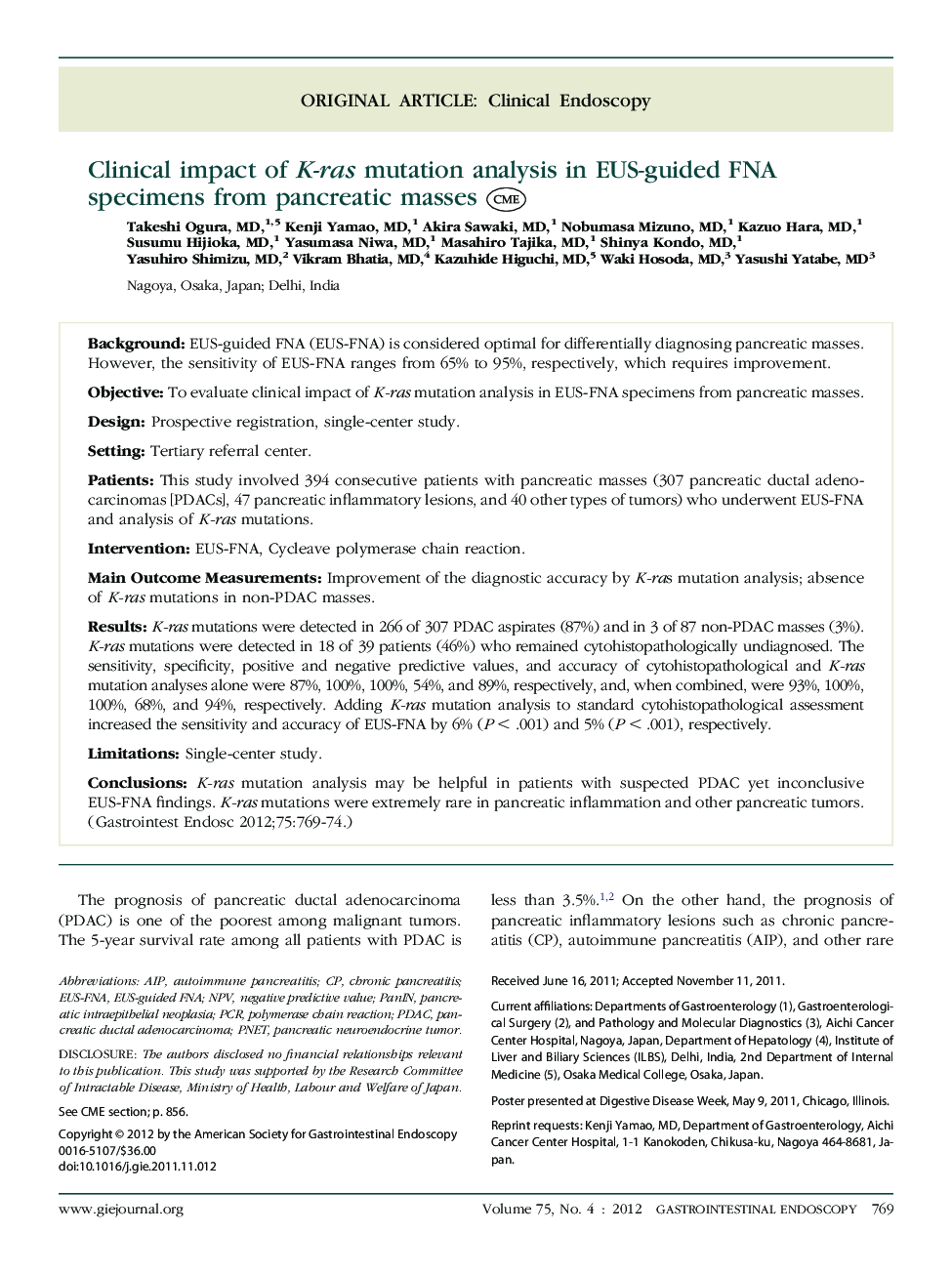| Article ID | Journal | Published Year | Pages | File Type |
|---|---|---|---|---|
| 3305115 | Gastrointestinal Endoscopy | 2012 | 6 Pages |
BackgroundEUS-guided FNA (EUS-FNA) is considered optimal for differentially diagnosing pancreatic masses. However, the sensitivity of EUS-FNA ranges from 65% to 95%, respectively, which requires improvement.ObjectiveTo evaluate clinical impact of K-ras mutation analysis in EUS-FNA specimens from pancreatic masses.DesignProspective registration, single-center study.SettingTertiary referral center.PatientsThis study involved 394 consecutive patients with pancreatic masses (307 pancreatic ductal adenocarcinomas [PDACs], 47 pancreatic inflammatory lesions, and 40 other types of tumors) who underwent EUS-FNA and analysis of K-ras mutations.InterventionEUS-FNA, Cycleave polymerase chain reaction.Main Outcome MeasurementsImprovement of the diagnostic accuracy by K-ras mutation analysis; absence of K-ras mutations in non-PDAC masses.ResultsK-ras mutations were detected in 266 of 307 PDAC aspirates (87%) and in 3 of 87 non-PDAC masses (3%). K-ras mutations were detected in 18 of 39 patients (46%) who remained cytohistopathologically undiagnosed. The sensitivity, specificity, positive and negative predictive values, and accuracy of cytohistopathological and K-ras mutation analyses alone were 87%, 100%, 100%, 54%, and 89%, respectively, and, when combined, were 93%, 100%, 100%, 68%, and 94%, respectively. Adding K-ras mutation analysis to standard cytohistopathological assessment increased the sensitivity and accuracy of EUS-FNA by 6% (P < .001) and 5% (P < .001), respectively.LimitationsSingle-center study.ConclusionsK-ras mutation analysis may be helpful in patients with suspected PDAC yet inconclusive EUS-FNA findings. K-ras mutations were extremely rare in pancreatic inflammation and other pancreatic tumors.
